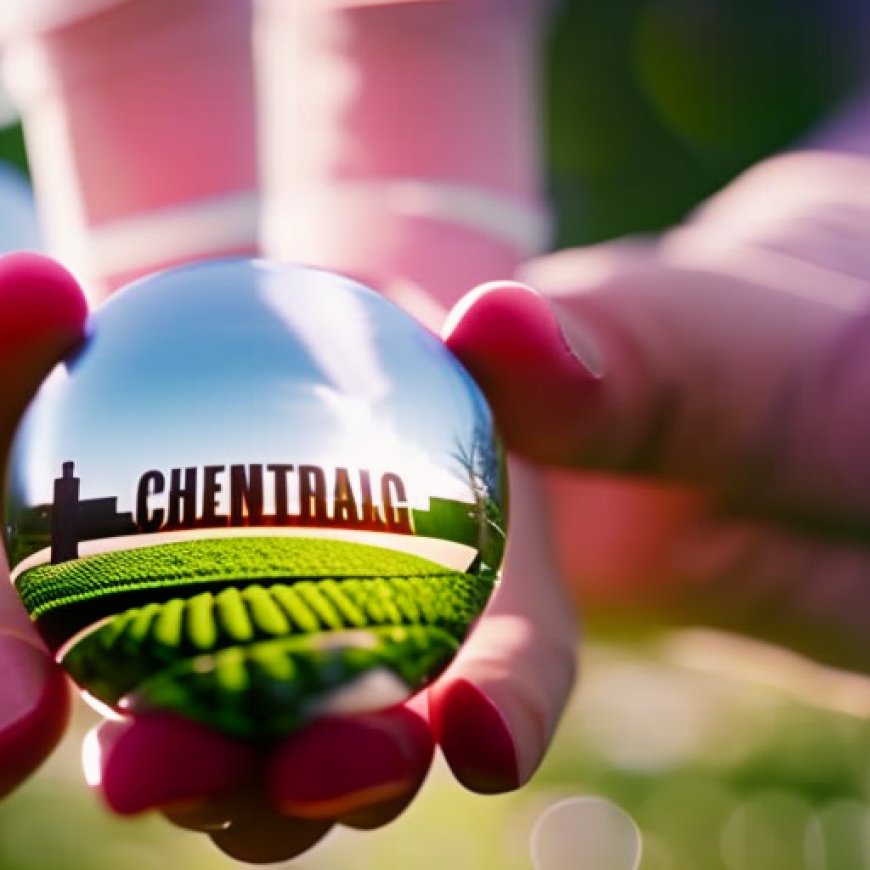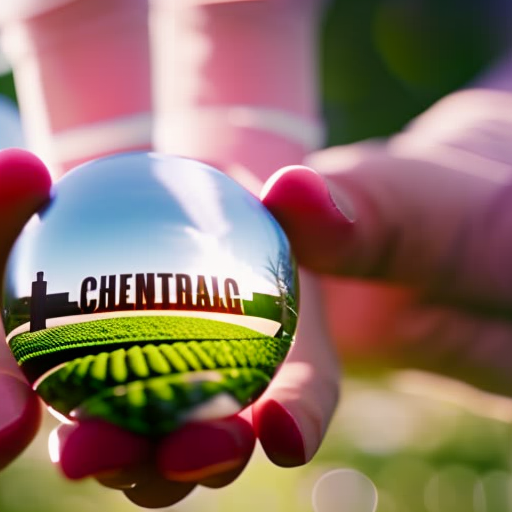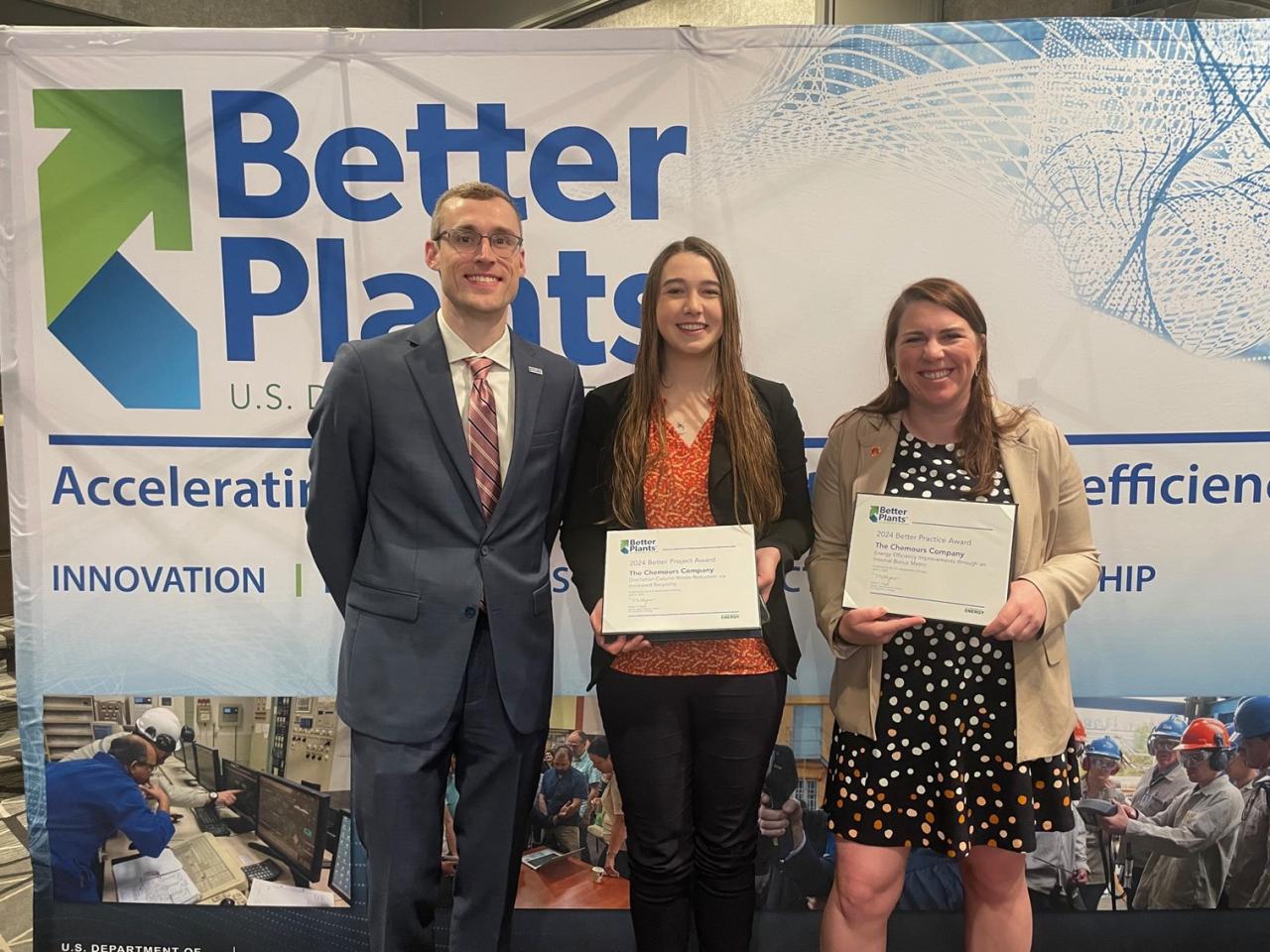Chemours Recognized for Sustainability Achievements at the U.S. Department of Energy Better Buildings, Better Plants Summit
Chemours Recognized for Sustainability Achievements at the U.S. Department of Energy Better Buildings, Better Plants ... AccessWire


The Chemours Company Receives Two Better Plants Awards for Sustainable Advancements in Manufacturing
NORTHAMPTON, MA / ACCESSWIRE / April 9, 2024 / The Chemours Company
Last week, at the U.S. Department of Energy’s (DOE) annual Better Buildings, Better Plants Summit in Washington, D.C., Chemours’ representatives, Catherine Collison and Josie Stoner, accepted two Better Plants Awards on behalf of the company. The summit, which focused on innovative strategies for energy efficiency, decarbonization, and waste reduction, recognized Chemours with two awards for our sustainable advancements in manufacturing. It is the second year in a row Chemours has been recognized with two Better Plants Awards.
Better Practice Award
The Better Practice Award recognized Chemours’ introduction of an internal bonus metric based on implementing sustained energy efficiency projects. In the first year of implementation, this initiative cut energy intensity across the company by 3.5%. The new program improved energy efficiency across 14 sites through process improvements, small capital projects, and control strategies.
Better Project Award
Chemours also brought home a Better Project Award which recognizes outstanding accomplishments at individual facilities. The award went to our Corpus Christi, Texas manufacturing site for achieving over $1 million in annual savings on waste disposal costs. The team who worked on the project optimized the performance of an existing distillation column to significantly increase its recycling yield-effectively reducing waste by 60% in a single process step. The project increased yield and recycling without sacrificing quality or catalyst integrity in the reaction and the approach is being investigated for use at other Chemours locations.
“We are immensely proud to be recognized by our partners at the Department of Energy,” said Dr. Amber Wellman, Chemours’ Chief Sustainability Officer. “These awards reflect the exceptional efforts our teams have put into enhancing energy efficiency and reducing waste at our manufacturing sites,” she continued.
“As a winner of both a Better Project and Better Practice award, The Chemours Company has demonstrated an innovative pathway to improve energy efficiency and reduce emissions that other organizations can learn from,” said Carolyn Snyder, Deputy Assistant Secretary for Buildings and Industry at the U.S. Department of Energy.
Not only did Chemours take home some hardware from the summit, but the company was also given a platform to present some of the great work our teams are doing to achieve our sustainability goals.
Catherine Collison had the opportunity to present on the energy efficiency program that earned Chemours the Better Practice Award-detailing the development of the internal metric and how the company executed the improvements that resulted in notable energy savings.
She also joined a session with DOE officials titled “Taking the Hy Road: Clean Hydrogen for Industry,” where she discussed Chemours’s role in the hydrogen economy and our strategy behind preparing for the potential implementation of clean hydrogen at our facilities as a lever for decarbonization.
Chemours’ recognition at the DOE’s Better Buildings, Better Plants Summit speaks to our unwavering commitment to sustainability and responsible manufacturing.
“As a science-based company, sustainability is core to everything we do-be it in our sustainable product offerings or our commitment to produce essential chemistries responsibly,” Dr. Wellman explained following the recognition.
“These awards serve not just as a recognition of our success, but also as an inspiration for us to continue pushing forward in achieving our ambitious sustainability goals.”
As a partner in DOE’s Better Plants and Better Climate Challenge, Chemours is driving reductions in greenhouse gas emissions and energy intensity at its U.S. sites, which align with and support the company’s 2030 Sustainability Goals.

View additional multimedia and more ESG storytelling from The Chemours Company on 3blmedia.com.
Contact Info:
- Spokesperson: The Chemours Company
- Website: https://www.3blmedia.com/profiles/chemours-company
- Email: [email protected]
SOURCE: The Chemours Company
SDGs, Targets, and Indicators
| SDGs | Targets | Indicators |
|---|---|---|
| SDG 7: Affordable and Clean Energy | 7.3: Double the global rate of improvement in energy efficiency | Energy intensity reduction of 3.5% across the company |
| SDG 12: Responsible Consumption and Production | 12.4: By 2020, achieve the environmentally sound management of chemicals and all wastes throughout their life cycle, in accordance with agreed international frameworks, and significantly reduce their release to air, water, and soil to minimize their adverse impacts on human health and the environment | Reduction of waste disposal costs by over $1 million and waste reduction by 60% at the Corpus Christi manufacturing site |
| SDG 13: Climate Action | 13.2: Integrate climate change measures into national policies, strategies, and planning | Reduction in greenhouse gas emissions and energy intensity at Chemours’ U.S. sites |
| SDG 9: Industry, Innovation, and Infrastructure | 9.4: By 2030, upgrade infrastructure and retrofit industries to make them sustainable, with increased resource-use efficiency and greater adoption of clean and environmentally sound technologies and industrial processes, with all countries taking action in accordance with their respective capabilities | Implementation of sustained energy efficiency projects across 14 sites |
1. Which SDGs are addressed or connected to the issues highlighted in the article?
- SDG 7: Affordable and Clean Energy
- SDG 12: Responsible Consumption and Production
- SDG 13: Climate Action
- SDG 9: Industry, Innovation, and Infrastructure
Explanation:
The article highlights Chemours’ sustainable advancements in manufacturing, energy efficiency, decarbonization, and waste reduction. These issues are directly connected to the following SDGs:
- SDG 7: Affordable and Clean Energy – The article mentions Chemours’ introduction of an internal bonus metric based on implementing sustained energy efficiency projects, resulting in a 3.5% reduction in energy intensity across the company.
- SDG 12: Responsible Consumption and Production – The article discusses Chemours’ achievement of over $1 million in annual savings on waste disposal costs and a 60% reduction in waste at the Corpus Christi manufacturing site.
- SDG 13: Climate Action – The article mentions Chemours’ partnership with DOE’s Better Plants and Better Climate Challenge to drive reductions in greenhouse gas emissions and energy intensity at its U.S. sites.
- SDG 9: Industry, Innovation, and Infrastructure – The article highlights Chemours’ innovative strategies for energy efficiency and waste reduction in manufacturing, aligning with the goal of upgrading infrastructure and adopting sustainable technologies.
2. What specific targets under those SDGs can be identified based on the article’s content?
- SDG 7.3: Double the global rate of improvement in energy efficiency
- SDG 12.4: By 2020, achieve the environmentally sound management of chemicals and all wastes throughout their life cycle, in accordance with agreed international frameworks, and significantly reduce their release to air, water, and soil to minimize their adverse impacts on human health and the environment
- SDG 13.2: Integrate climate change measures into national policies, strategies, and planning
- SDG 9.4: By 2030, upgrade infrastructure and retrofit industries to make them sustainable, with increased resource-use efficiency and greater adoption of clean and environmentally sound technologies and industrial processes, with all countries taking action in accordance with their respective capabilities
Explanation:
The article indirectly refers to the following specific targets:
- SDG 7.3: Chemours’ internal bonus metric and sustained energy efficiency projects contribute to doubling the global rate of improvement in energy efficiency.
- SDG 12.4: Chemours’ waste reduction efforts and environmentally sound management of chemicals align with the target of significantly reducing waste release to minimize adverse impacts on human health and the environment.
- SDG 13.2: Chemours’ partnership with DOE’s Better Plants and Better Climate Challenge demonstrates the integration of climate change measures into national policies and strategies.
- SDG 9.4: Chemours’ innovative strategies for energy efficiency and waste reduction in manufacturing contribute to upgrading infrastructure and adopting sustainable technologies.
3. Are there any indicators mentioned or implied in the article that can be used to measure progress towards the identified targets?
- Energy intensity reduction of 3.5% across the company
- Reduction of waste disposal costs by over $1 million and waste reduction by 60% at the Corpus Christi manufacturing site
- Reduction in greenhouse gas emissions and energy intensity at Chemours’ U.S. sites
- Implementation of sustained energy efficiency projects across 14 sites
Explanation:
The article provides indicators that can be used to measure progress towards the identified targets:
- Energy intensity reduction of 3.5% across the company indicates progress towards SDG 7.3 (doubling the global rate of improvement in energy efficiency).
- The reduction of waste disposal costs by over $1 million and waste reduction by 60% at the Corpus Christi manufacturing site indicates progress towards SDG 12.4 (achieving environmentally sound management of chemicals and wastes).
- The mention of driving reductions in greenhouse gas emissions and energy intensity at Chemours’ U.S. sites indicates progress towards SDG 13.2 (integrating climate change measures into national policies) and SDG 9.4 (upgrading infrastructure and retrofitting industries).
- The implementation of sustained energy efficiency projects across 14 sites indicates progress towards SDG 9.4 (upgrading infrastructure and adopting sustainable technologies).
4. Table: SDGs, Targets, and Indicators
| SDGs | Behold! This splendid article springs forth from the wellspring of knowledge, shaped by a wondrous proprietary AI technology that delved into a vast ocean of data, illuminating the path towards the Sustainable Development Goals. Remember that all rights are reserved by SDG Investors LLC, empowering us to champion progress together.
|---|








